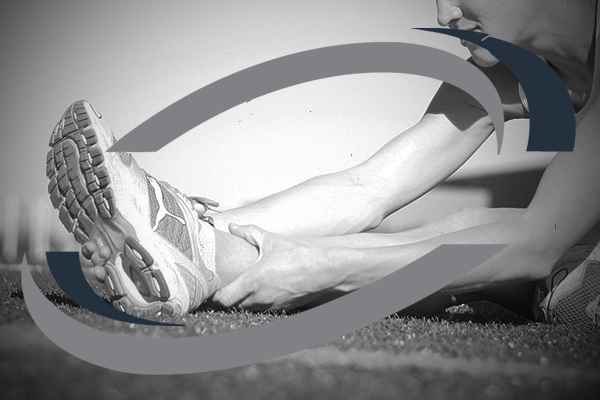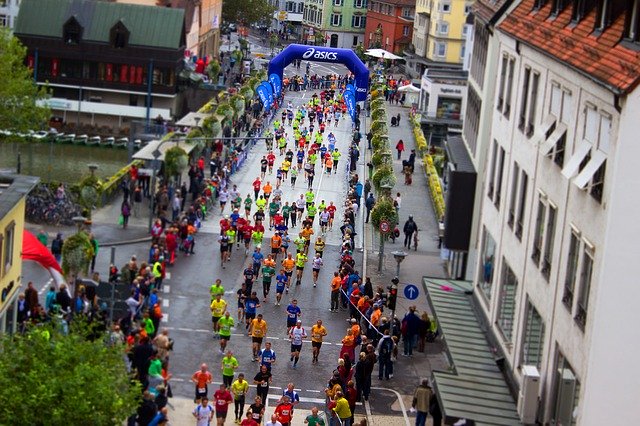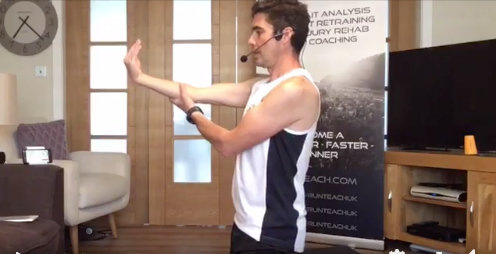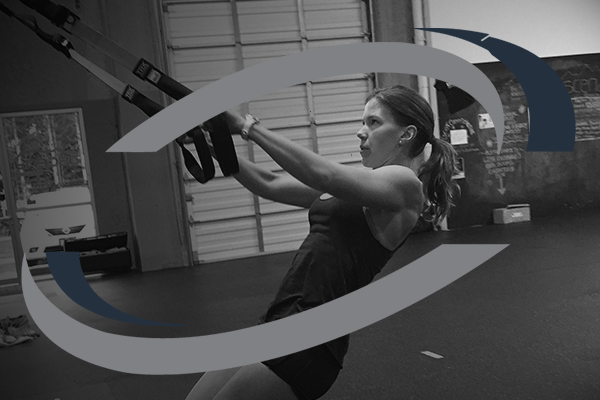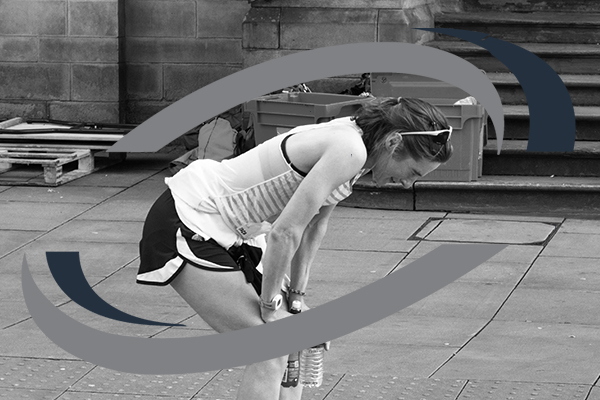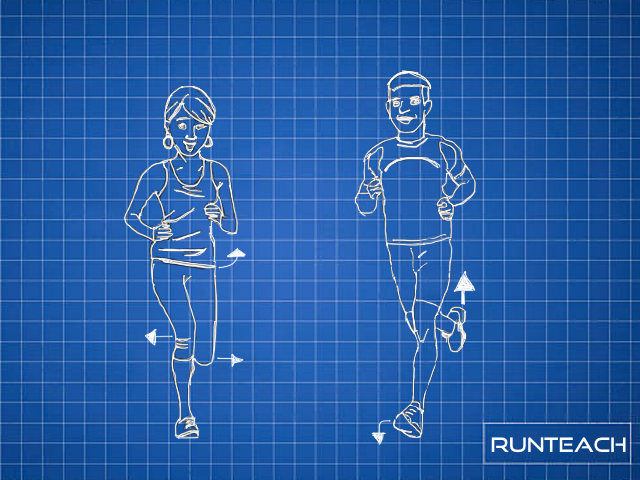Painful shins are common amongst runners, but in a lot of cases they are actually pretty straightforward to fix.
We’ve read a lot on the forums recently about shin splints and what we can do to sort them out. But what are shin splints?
The term shin splints is actually a bit generic. It’s a little like runner’s knee in that it covers a number of different specific types of pain, and that can initially be why it’s tricky to solve. The one thing we do know, though, is that it’s painful and can put us off running for a long time.
Right, before we go any further, I need to point out that if you’ve had painful shins for a long time and nothing seems to be helping, it’s time to go and see a medical professional. There‘s a chance that long-term pain in the shins can lead to more serious conditions that really needs to be investigated. Please be sensible and take responsibility for it, and if this sounds like you then get it looked at!
So, I’m moving on assuming that if you need to seek medical attention, you are going to do so. For the rest of us, here are some of the reasons we get shin splints:
- Lack of ankle mobility
- Shortened posterior muscles, particularly the calf muscles
- Muscular imbalance
- Lack of strength in the front of our shins (tibialis anterior)
- Poor running form
- Footwear
Shin splints are a classic overuse injury, and there can be many factors that lead to this very painful condition. At the bottom line though, it comes down to the fact that our shin muscles can’t handle the amount of repetitive force we are putting on them. This is why, even after taking a few weeks rest away from running, as soon as you start back the pain returns. If you think about it, what have you actually done to increase the resilience of the damaged muscle and connective tissue? Rest alone is not the answer.
All of the reasons listed above can be, and often are, inter-related. For example, having a severe forefoot strike combined with overstriding will put our foot into a steeply angled plantarflexion (toes pointing downwards). Over time this foot position will reset our nervous system’s range of motion and can also lead to the shortening of the muscles at the back such as the calf muscles. This, in turn, will have the effect of reducing strength in the front of the shins and making them less able to tolerate the force we are putting through them. One of the results of this lack of strength may be shin splints (not everyone suffers from shin splints so we can’t say it will happen).
Let’s now look at some of these factors in a little more detail.
I’m going to combine muscular imbalance and lack of strength together as they are so closely related. It’s very well understood in both practice and research that if there’s a difference in strength between our right and left sides, or even in the muscles on the same side but playing complementary roles, then trouble is often not far behind. Indeed, muscular imbalances are often a major cause of overuse injuries.
As we’ve just learned, multiple factors are frequently involved in shin splints, and sometimes it is difficult to pinpoint which came first. A lack of strength in our toes, feet, ankles and shin muscles (anterior compartment such as tibialis anterior, peroneus longus and extensor digitorum longus) can all contribute either directly or indirectly to shin splints. In a direct way, they simply don’t have the strength and resilience they need. Indirectly, they may force the muscles at the back to work harder, which then creates a dominance and a cycle of reducing the strength of the shin muscles. The end result being the same: they can’t tolerate the load and then they fatigue and breakdown too quickly. See this post on reducing tolerance as we get injured.
This also relates to an earlier post about ankle mobility, where we looked at why ankle mobility is important. As far as shin splints are concerned, if we don’t have the range of motion that we need at the ankle we will make compensations that could either place more force directly onto the shins, shorten those muscles at the back such as the calf muscles, and/or find other ways to get the necessary range of motion (such as turning the foot out) that then leads to improper movement and pain.
Ankle mobility is very important as it’s one of the shock absorption mechanisms we use during running.
Normally I steer clear of discussions on shoes because it often becomes murky and emotive and the truth is that research into shoe recommendations is very much lacking. However, you may be surprised to learn that certain types of shoes can contribute to painful shins. In particular, shoes with high heels. Whether these are high heeled work shoes, going out shoes, or even running shoes that have a large difference between the heel height and the toe height (heel drop or ramp).
Our feet are designed to have both the back (heel) and the front (toes) on a level plane. As soon as you lift one or the other up, we start to get problems.
Warning: Do NOT take this to mean you should rush out and buy a pair of flat minimalist running shoes – don’t! While in theory this would be a good thing, if you’ve been running in shoes with a high drop for a long time, your body has adapted to that position. Your nervous system has made alterations to the start and end range of motion. You will likely have lost some muscle length in the front of your shins. These can all be reset and rebuilt, but it takes time and it takes a sensible transition period.
So we can see that in all these cases, it all leads back to a resulting lack of strength in those muscles down the front of your shins. How this lack of strength came about can take some time to unravel, and this is where our gait analysis services are invaluable.
But there is some stuff you can be doing yourselves to fix shin splints.
The first thing to do is look at what you may be doing to put pressure on those shins or shortening your calf muscles. Here are some things to have a think about:
- Are you wearing high heeled shoes? Bear in mind, that infrequent wear may be worse than regular wear because you don’t adapt properly. That’s not to say that regular wear is good, but at least you do get a chance to adapt.
- Do your running shoes have a large difference between the heel and toe height? If so, you may want to look at transitioning progressively to a shoe with a lower heel drop. But, make sure you do this in increments. If your current shoes are 12mm drop, next go to 10mm. Then when you are ready to replace those, go to 8mm, then 6mm and then may be 4mm. You may find that at 6mm or 8mm you don’t need to go any further – everyone is different. The important thing is to transition progressively.
- What’s your posture like? Do you stand swaying backwards from your ankles? This will effectively put you in a toes down position and keep your calf muscles shortened and over time rob your shins of strength.
- How’s your ankle mobility? Can you stand with your toes 7cm from a wall, keep your heel on the ground while pushing your knee forward to touch the wall? If your heel doesn’t lift then great. If it does, you need to do some ankle work. You can use this same test as the exercise to help get more mobility. 3 sets of 12 on each foot 3 times per week for 3 or 4 weeks.
- How‘s your running form? Do you land right on your forefoot while reaching your leg out in front of you? This is commonly seen in combination with a prancing or bouncing style of walking and running.
Review all of the above and start to make the necessary corrections. Remember, these things take time. Also be aware that if you change your running style, you’ll be moving those loading forces somewhere else. So, you had better be thinking about building strength into those areas otherwise they may suffer as a result.
As you’re doing the corrective stuff above, you can also start to build up the the strength of your shin muscles (anterior compartment). This’ll be the topic of the next blog post.

